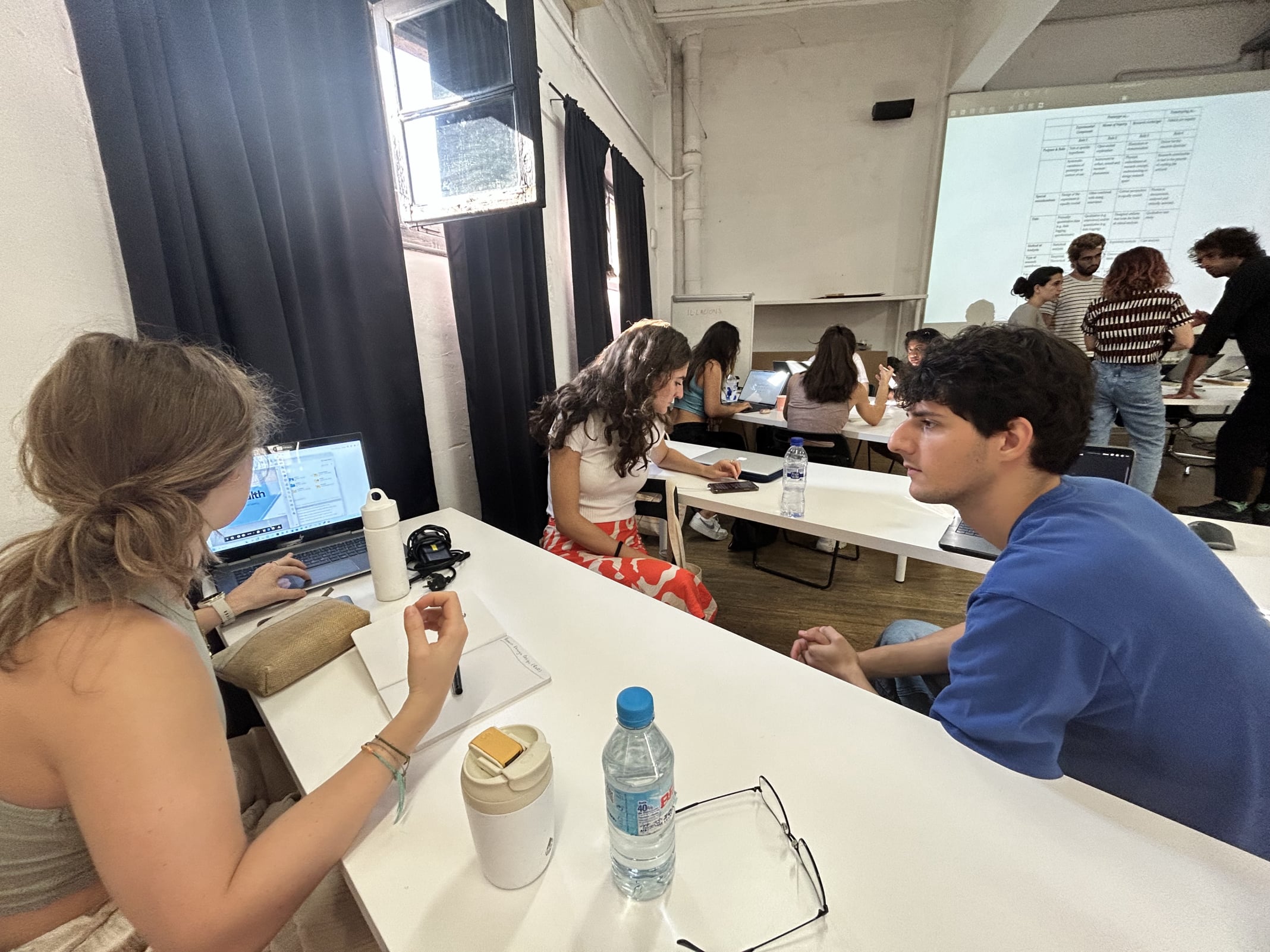
The prototype as an experimental component. To test physical things and elements for the process of prototyping.
The prototype as a means of inquiry. Using and building products to get input for feedback.
The prototype as a research archetype. Does not have a functional role but reflects through the input of others.
The process of prototyping as a vehicle for inquiry. Focuses on the process of the prototyping rather than the end result.
The session on the various roles of prototyping and their significance in first-person design interventions was a pivotal learning experience. It shed light on the multifaceted aspects of prototyping, emphasizing the importance of discerning the differences between these roles for effective and impactful design interventions.
During the session, we engaged in a thought-provoking group activity centered around sharing and analyzing personal previous projects. This activity provided a unique opportunity to delve into our past work, deconstructing each project to identify and assign different roles of prototyping. As we discussed and allocated roles to each project, we gained a deeper understanding of the nuances and dynamics involved in the prototyping process.
Understanding the roles of prototyping, ranging from explorative and generative prototyping to evaluative and communicative prototyping, revealed their distinct purposes and contributions to the design process. Explorative prototyping allowed for creative exploration and ideation, enabling us to experiment and push boundaries. Generative prototyping emphasized generating new ideas and concepts, fostering innovation and out-of-the-box thinking. Evaluative prototyping helped in assessing and refining design solutions, ensuring they meet user needs and expectations. Lastly, communicative prototyping emphasized effectively conveying ideas and design intent to stakeholders and collaborators.

Recognizing the differences between these roles proved critical in comprehending how to strategically incorporate them into our design approach. For instance, aligning the appropriate prototyping role with the design stage is essential for ensuring a seamless and efficient design process. Employing explorative and generative prototyping in the early stages encourages creativity and ideation, setting the foundation for the project. As the project evolves, evaluative prototyping becomes paramount for refining and validating design concepts, leading to a more user-centric solution. Finally, communicative prototyping bridges the gap between design vision and stakeholder comprehension, facilitating smooth collaboration and project progression.
This session illuminated the power of intentional prototyping and the necessity of understanding the nuanced roles each prototype plays in the design journey. Armed with this knowledge, I am excited to integrate these insights into my future design interventions, ensuring a more strategic and effective approach towards creating innovative and user-centered solutions.
The first ring prototype featured a thick, cylindrical design for me to understand in depth of the ergonomics of this ring as pilots will be wearing this while sleeping and resting. I came to the conclusion that the ring was uncomfortable and wasn't user-friendly at all.
The second ring prototype featured in a flatter design. It wasn't as practical due to the nature of the ring material not being too malleable. However, this design was more ergonomic and more comfortable to sleep and rest in.
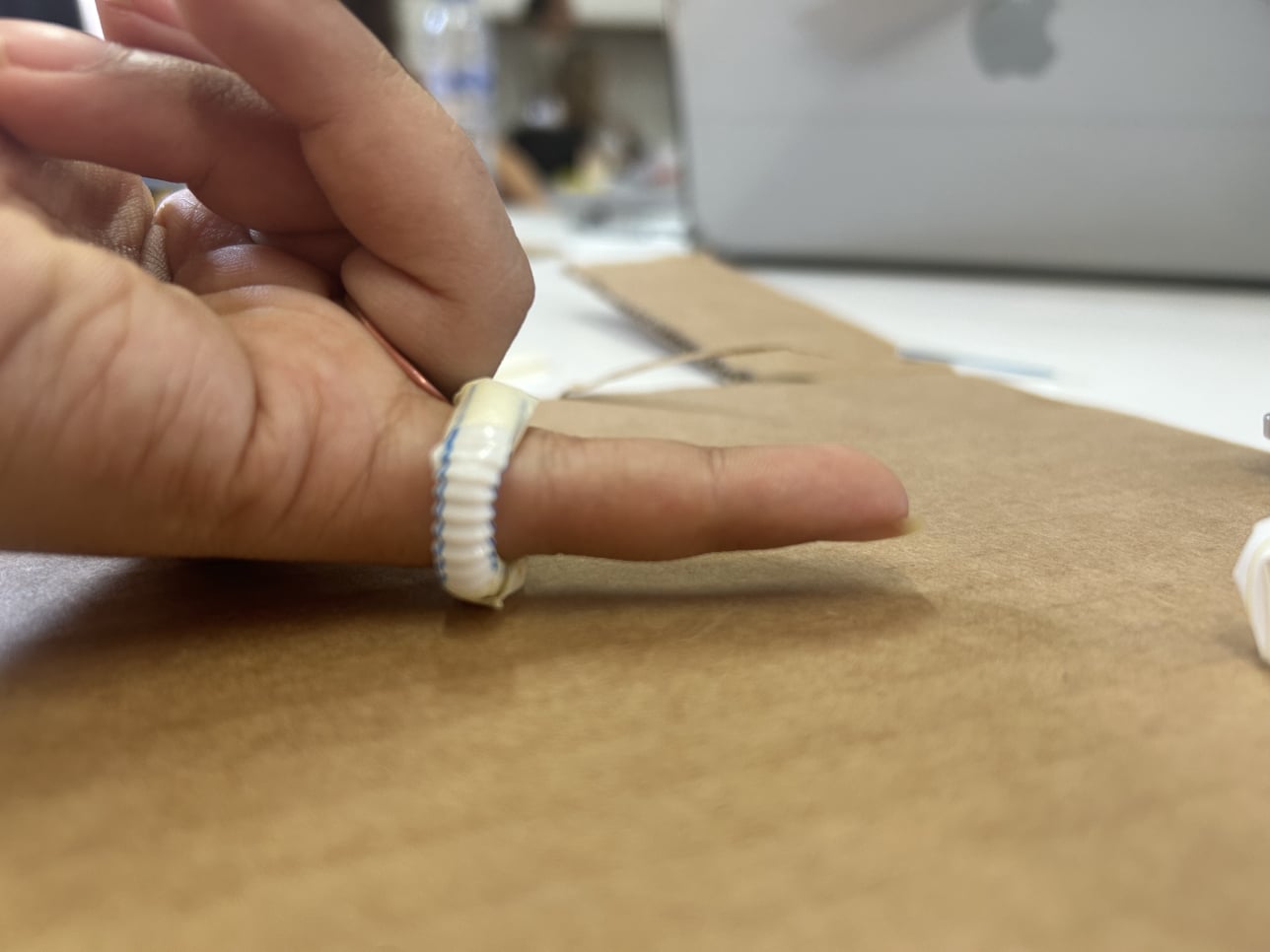
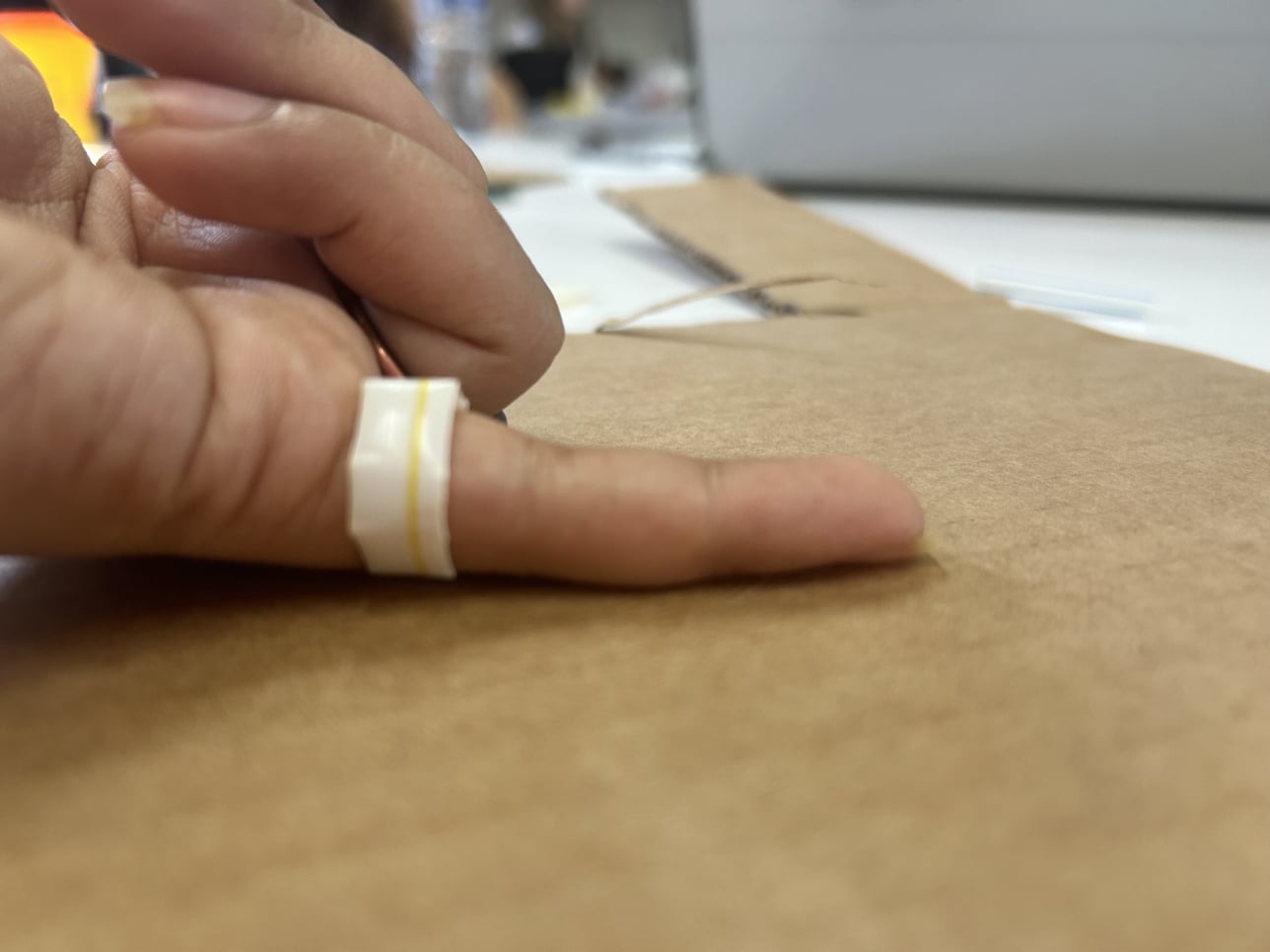
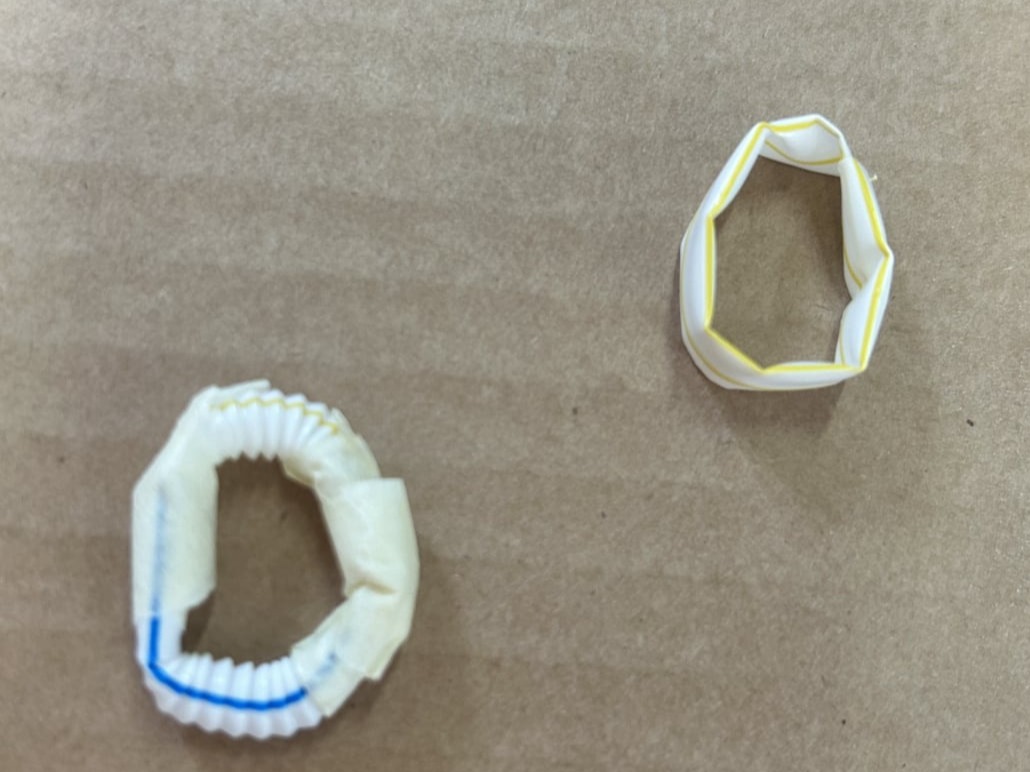
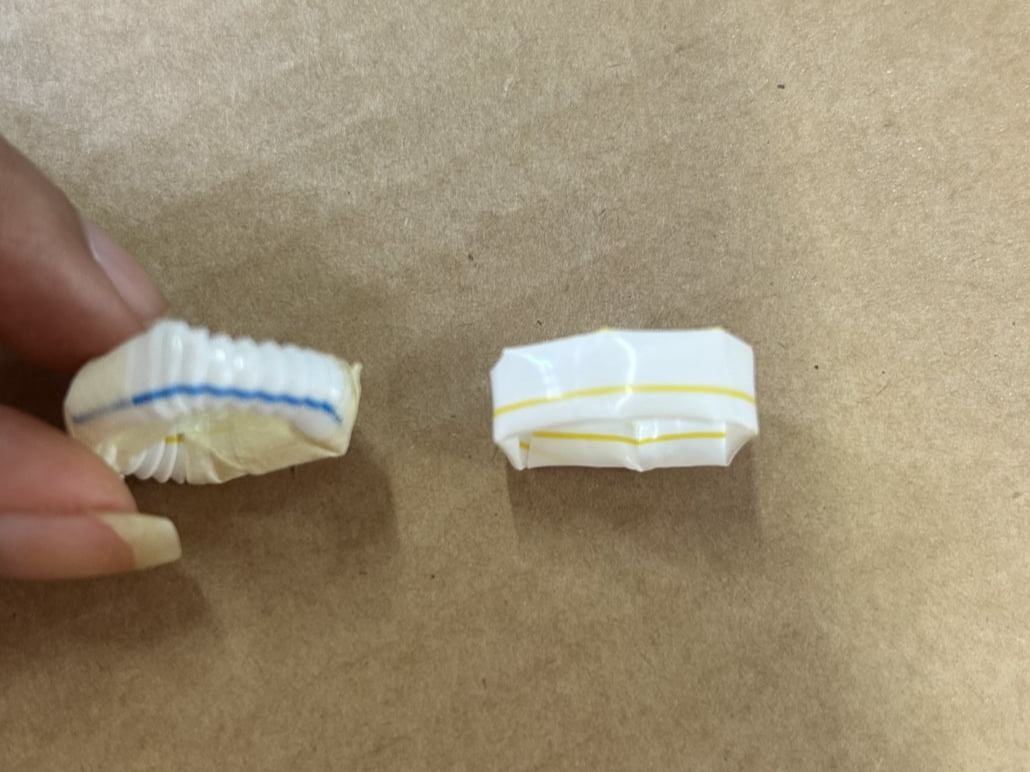
This simple yet impactful exercise reiterated the significance of ergonomics in design. It emphasized that even minor alterations in design can significantly influence user comfort and overall satisfaction. In the context of a sleep monitoring finger ring for pilots, ensuring optimal comfort is paramount, as it directly impacts the wearer's ability to rest effectively and remain alert during critical operational periods.
Furthermore, this activity underscored the value of prototyping in the design process. Prototyping enabled a tangible and hands-on exploration of design concepts, allowing for rapid iteration and assessment of different design directions. It provided a tangible platform for testing and validating assumptions, leading to a more informed and refined design outcome.
As I move forward in this project and beyond, I will carry the lessons from this exercise with me. Understanding the importance of user comfort and the direct relationship between design choices and ergonomics will guide me in making informed decisions to enhance the usability and effectiveness of my designs. Prototyping, as demonstrated through this exercise, will remain a fundamental tool in my design toolkit, enabling me to create products that prioritize the user's needs and well-being.
No Code Website Builder